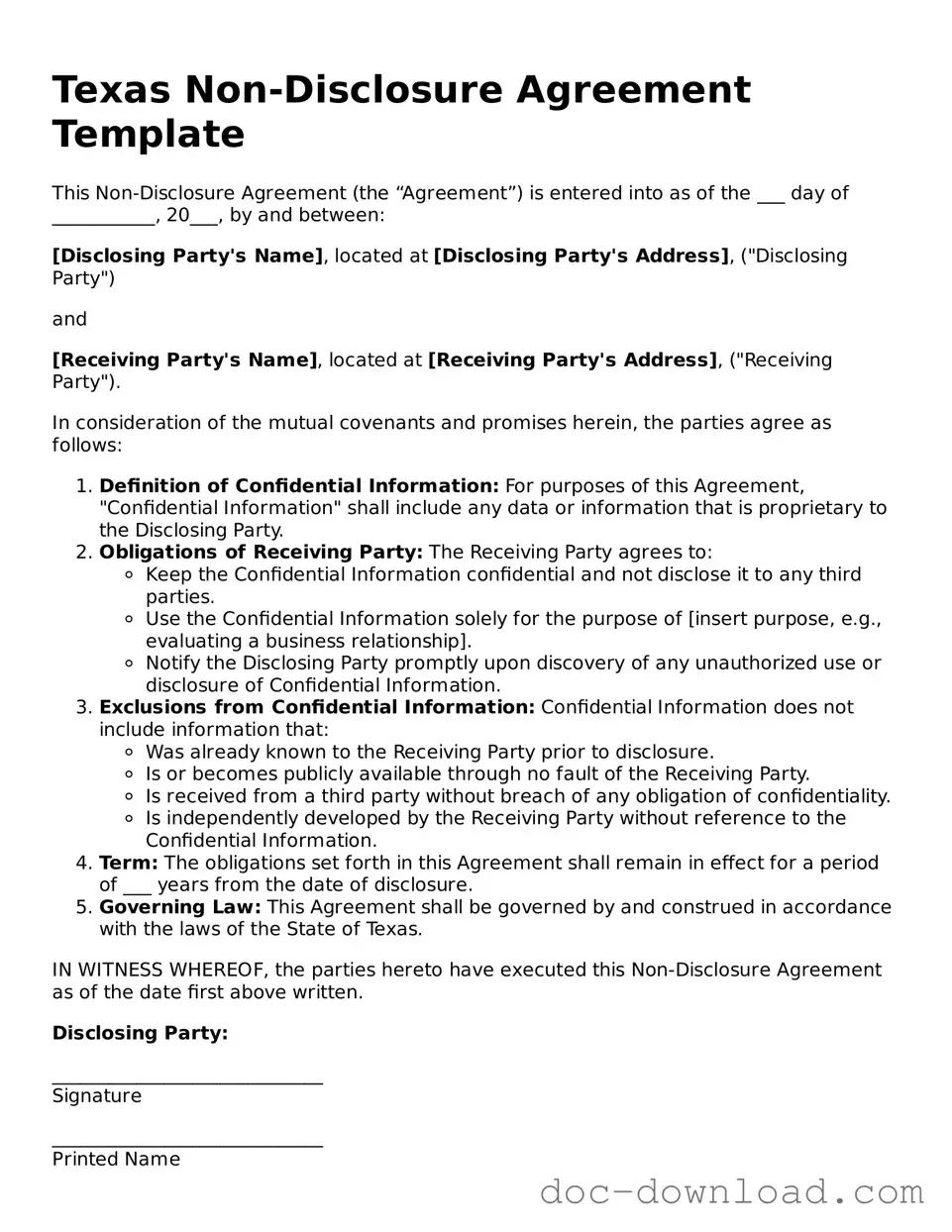Texas Non-Disclosure Agreement Template
This Non-Disclosure Agreement (the “Agreement”) is entered into as of the ___ day of ___________, 20___, by and between:
[Disclosing Party's Name], located at [Disclosing Party's Address], ("Disclosing Party")
and
[Receiving Party's Name], located at [Receiving Party's Address], ("Receiving Party").
In consideration of the mutual covenants and promises herein, the parties agree as follows:
- Definition of Confidential Information: For purposes of this Agreement, "Confidential Information" shall include any data or information that is proprietary to the Disclosing Party.
- Obligations of Receiving Party: The Receiving Party agrees to:
- Keep the Confidential Information confidential and not disclose it to any third parties.
- Use the Confidential Information solely for the purpose of [insert purpose, e.g., evaluating a business relationship].
- Notify the Disclosing Party promptly upon discovery of any unauthorized use or disclosure of Confidential Information.
- Exclusions from Confidential Information: Confidential Information does not include information that:
- Was already known to the Receiving Party prior to disclosure.
- Is or becomes publicly available through no fault of the Receiving Party.
- Is received from a third party without breach of any obligation of confidentiality.
- Is independently developed by the Receiving Party without reference to the Confidential Information.
- Term: The obligations set forth in this Agreement shall remain in effect for a period of ___ years from the date of disclosure.
- Governing Law: This Agreement shall be governed by and construed in accordance with the laws of the State of Texas.
IN WITNESS WHEREOF, the parties hereto have executed this Non-Disclosure Agreement as of the date first above written.
Disclosing Party:
_____________________________
Signature
_____________________________
Printed Name
_____________________________
Title
Receiving Party:
_____________________________
Signature
_____________________________
Printed Name
_____________________________
Title
